New Treasures: Ashen Stars by Robin D. Laws
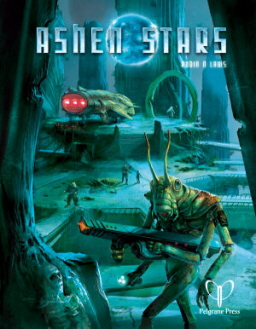 Back in August, we reported that Pelgrane Press’s new space opera RPG Ashen Stars had won a 2012 ENnie Award for Best Setting. That was enough to pique my curiosity, and I ordered a copy.
Back in August, we reported that Pelgrane Press’s new space opera RPG Ashen Stars had won a 2012 ENnie Award for Best Setting. That was enough to pique my curiosity, and I ordered a copy.
I’ve been waiting for a science fiction role playing game with a truly rich setting for a long time. Our Managing Editor Howard Andrew Jones has been exploring Traveller in a series of occasional articles — most recently on the Netherell setting and The Third Imperium — but to be honest I always found the setting for Traveller to be fairly generic, at least in the early editions. The last SF RPG to really impress me was Rogue Trader by Fantasy Flight, a gorgeously produced game set in the Warhammer 40,000 universe; before that I have to go all the way back to Holistic Design’s future-medieval setting Fading Suns, first released in 1996.
I’m very pleased to be able to add Ashen Stars to that short list. Drawing heavily upon his successful GUMSHOE mystery system, author Robin D. Laws has created an extremely appealing game of space opera procedural mysteries. In the tradition of the best hard boiled detective fiction, players are constantly scrambling for money, equipment, and respect… all of which they’ll need to succeed in a war-ravaged perimeter where trust is a precious commodity, and very little is truly what it seems.
The players in Ashen Stars are private eyes — excuse me, licensed mercenaries — acting as freelance law enforcement on a rough-and-tumble frontier called “the Bleed,” where humans and half a dozen alien races mingle, compete, and trade. The Mohilar War that devastated the once powerful governing Combine ended seven years ago, and no one is sure exactly how. The Combine is in no shape to govern the Bleed, and rely on loosely-chartered bands like the players to maintain peace in the sector, keep a lid on crime, and investigate odd distress signals from strange corners of space. Like the crew of the Serenity, your loose band of players operate on both sides of the law, secure lucrative contracts, scramble to maintain your ship and upgrade your aging equipment, and maintain a code of honor in a place where reputation is the most precious commodity there is.
The writing and color art are impressive throughout, and the book is filled with fascinating tidbits that will make you anxious to play, and re-introduce you to the essential joy of role playing.
 This year, the home video divisions of all the major distributors banded together and plotted a full-scale assault on the wallets and bank accounts of Blu-ray owners during September and October. Only the wealthiest could possibly survive an attack that began with the first Hi-Def release of the Indiana Jones films. But the supreme weapon, the ultimate October Surprise, is Universal’s huge ebony slab of fear, nostalgia, and latex make-up: Universal Classic Monsters: The Essential Collection. Spanning twenty-three years and nine films (advertised as eight, sorry Spanish Dracula), the long-anticipated set brings the Masters of Halloween into glorious 1080p for the first time, and in perfect seasonal position to drain your money before you waste it on a Jack Sparrow costume that forty other people are also going to wear to that same party.
This year, the home video divisions of all the major distributors banded together and plotted a full-scale assault on the wallets and bank accounts of Blu-ray owners during September and October. Only the wealthiest could possibly survive an attack that began with the first Hi-Def release of the Indiana Jones films. But the supreme weapon, the ultimate October Surprise, is Universal’s huge ebony slab of fear, nostalgia, and latex make-up: Universal Classic Monsters: The Essential Collection. Spanning twenty-three years and nine films (advertised as eight, sorry Spanish Dracula), the long-anticipated set brings the Masters of Halloween into glorious 1080p for the first time, and in perfect seasonal position to drain your money before you waste it on a Jack Sparrow costume that forty other people are also going to wear to that same party.
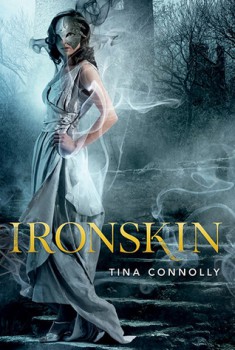 Ironskin
Ironskin The sixteenth- and early seventeenth-century Puritan adventurer Solomon Kane is my favorite of Robert E. Howard’s serial characters: a fascinating mixture of obsession, religion, righteousness, history, and dark fantasy awesomeness. However, it’s the character I love, not necessarily the stories in which he appeared. With the exception of “Wings in the Night,” the Solomon Kane stories are mid-range pieces in Howard’s canon, not at the consistent level he delivered later with Conan, King Kull, or many of his one-shots. Solomon Kane appeared early in Howard’s short professional pulp career, with the first published story in the August 1928 issue of Weird Tales. Perhaps if Howard stayed longer with the Puritan hero while his storytelling skills increased, he might have equaled the Conan series in quality.
The sixteenth- and early seventeenth-century Puritan adventurer Solomon Kane is my favorite of Robert E. Howard’s serial characters: a fascinating mixture of obsession, religion, righteousness, history, and dark fantasy awesomeness. However, it’s the character I love, not necessarily the stories in which he appeared. With the exception of “Wings in the Night,” the Solomon Kane stories are mid-range pieces in Howard’s canon, not at the consistent level he delivered later with Conan, King Kull, or many of his one-shots. Solomon Kane appeared early in Howard’s short professional pulp career, with the first published story in the August 1928 issue of Weird Tales. Perhaps if Howard stayed longer with the Puritan hero while his storytelling skills increased, he might have equaled the Conan series in quality.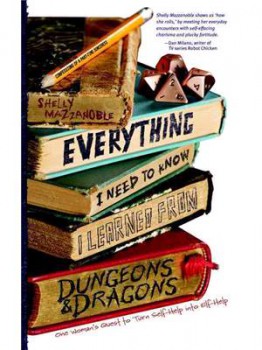 Everything I Need to Know I Learned From Dungeons & Dragons
Everything I Need to Know I Learned From Dungeons & Dragons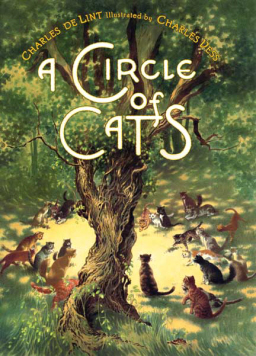
 The Charge: Attempting to re-start a film franchise about a classic comic book character.
The Charge: Attempting to re-start a film franchise about a classic comic book character.
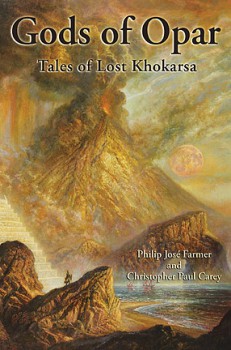 Gods of Opar: Tales of Lost Khokarsa
Gods of Opar: Tales of Lost Khokarsa